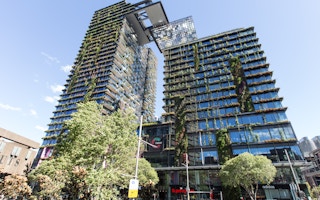Businesses have taken many positive steps toward aligning themselves with the United Nations’ Sustainable Development Goals, in their operational activities and their CSR and philanthropic endeavours.
However, alignment isn’t action. So, how can businesses that have started further embed their sustainability strategies within the organisation and drive execution? And how can those that haven’t done such an alignment—the case with many—get going?
In our new book, Leading Sustainably—The path to sustainable business and how the SDGs changed everything (Routledge), we explore 10 important lessons about challenges and pitfalls that businesses are encountering, and how to overcome them. Companies have had to ask the critical question, “How do we manage the gargantuan task of transforming our organisation into one that is capable —at all levels—of building and successfully managing a fully sustainable business?”
Here are two examples of practical, effective approaches taken by a Japanese developer and Italian canned meat and seafood company, out of the 10 we present in Leading Sustainably.
“
These two companies show how bold leadership via clear decision making, and outreach to customers to make them aware of the issues you are confronting, can set you on the path to success with sustainability.
Green first: A clear strategic choice
First, you must start with clear strategic choices. Japanese home builder Sekisui House is a striking example. It embarked on a fully sustainable business strategy before many firms. Following the 2008 global financial crisis, which caused a sharp decline in operating margins, Sekisui House’s management decided to completely remove carbon from the housing lifecycle by 2050. This meant a shift away from standard approaches to building houses to an almost exclusive focus on “green homes”.
“We wanted to be preventative, not just responsive,” says Dr Kenichi Ishida, Sekisui House’s managing officer of the environment promotion division. “Our aim is to make our customers happy, namely end users —homeowners—by working to understand and respond to their needs. For our company, this means reducing carbon emissions and energy use and developing homes that can respond to the challenges of a four degrees Celsius world.”
Dr Ishida explains that Sekisui’s leadership believed that there was such significant consumer demand for green homes that they could sell at the premium price that would be required to recoup costs for the superior materials and design. Sekisui implemented the strategy in 2009 with a “Green First” model and, by 2018, 79 per cent of newly built units were based on its Zero Energy Home (ZEH) concept.
The choice paid off big time. Sekisui House consolidated its leadership position in Japan and expanded abroad. It tripled operating margins to 9 per cent from 2009 to 2017, saw the rate of “very satisfied” customers grow by 10 per cent, and achieved a CO2 emissions reduction rate in newly built homes of 43 per cent in 2009, which rose to 82 percent by 2018. It also received a coveted spot in the Dow Jones Sustainability Indices World Index, which designated it as the world’s highest rated home building company.
Educating customers is part of the job
While consumers often state they want more sustainable offerings, how they make trade-offs in their purchasing decisions on these same products or services isn’t yet obvious. Customers may be willing to pay more, but how much? Are they willing to break their habits to move to a consumption model that’s better for society?
Many still appear conflicted or may not fully grasp how even seemingly small actions may have major impacts.
Italy’s Bolton Group stepped up to this challenge. Bolton Group is quickly becoming a consumer products powerhouse, with a presence in 126 countries. Bolton Food, operating in the canned fish and meat sector, has reinforced its leading position by the transitioning its brands to a sustainable model, led by sustainable development director Luciano Pirovano.
Taking a sustainable approach required ambitious commitments such as achieving 100 per cent sustainable fishing by 2024, up from today’s 50 per cent. A wholesale approach to transforming its operations has led to the successful establishment of a best-in-class sustainable fishing operation in Bolton Food’s Tri Marine production facility in the Solomon Islands, which is significantly changing lives for the better within the local community by employing 1,000 people.
Bolton Food embarked on this journey 10 years ago, when retail customers started to bring their interest in more environmentally friendly products to the company’s attention. The management recognised that moving to a sustainable model was the best long-term strategy for its brands.
“Sustainability is a long-term result—we’re in the middle of a long trek,” says Pirovano. “It takes time before seeing results. This patience has given us time to work on this in the right way.”
With fish stocks increasingly under threat, there is a growing belief in the industry that operating within a sustainable fishing model is the only possible outcome in the future. Consumers, while aware that overfishing is an issue, may not yet automatically search the shelves for sustainable canned fish.
“Consumers are aware that fish are overfished and the oceans are under pressure. It’s difficult to understand, though, how important this is in their ‘moment of truth’,” says Pirovano, describing the moment a customer is at the shelf making a purchase decision. “Pricing and other factors come into play. There’s a lot of curiosity about sustainability, particularly younger consumers, thanks to smartphones, digital technology. So we know that the attention of consumers is growing, but on the other side, you need to educate them.”
Bolton Food has stepped up activities that build public awareness of sustainable fishing, with three key actions: It obtained the rigorous Marine Stewardship Council (MSC) certification, which establishes standards for sustainable fishing. In 2016, the company partnered with the World Wide Fund for Nature (WWF) to improve sustainability across the industry. And in 2018, it committed to reduce the use of fishing aggregating devices per cent by this year.
Based on Bolton Food’s experience, Pirovano believes that “a great brand can explain (to consumers) what is meant by sustainable fishing, what certified fisheries are”. Now, the company is a credible voice in bringing more public awareness to overfishing, and benefits by having differentiated its brands from the competition.
Some of the most successful actions that organisations take are often not the most dramatic or flashy ones. Simple, straightforward actions often have the most impact.
These two companies show how bold leadership via clear decision making, and outreach to customers to make them aware of the issues you are confronting, can set you on the path to success with sustainability. We’ve found businesses spanning industries from hospitality to waste management, fashion, finance, retail, food and more that are taking similar and complementary practical steps to advance on the journey to adopting more sustainable business models.
Trista Bridges is a strategy and marketing expert with extensive experience across various geographies and sectors including consumer products, financial services, technology, and healthcare. Donald Eubank is an experienced manager who has worked across the IT, finance, and media industries in Asia.
They are co-founders of Read the Air, a coalition of strategy and operations professionals, and co-authors of Leading Sustainably—The path to sustainable business and how the SDGs changed everything (Routledge).



















